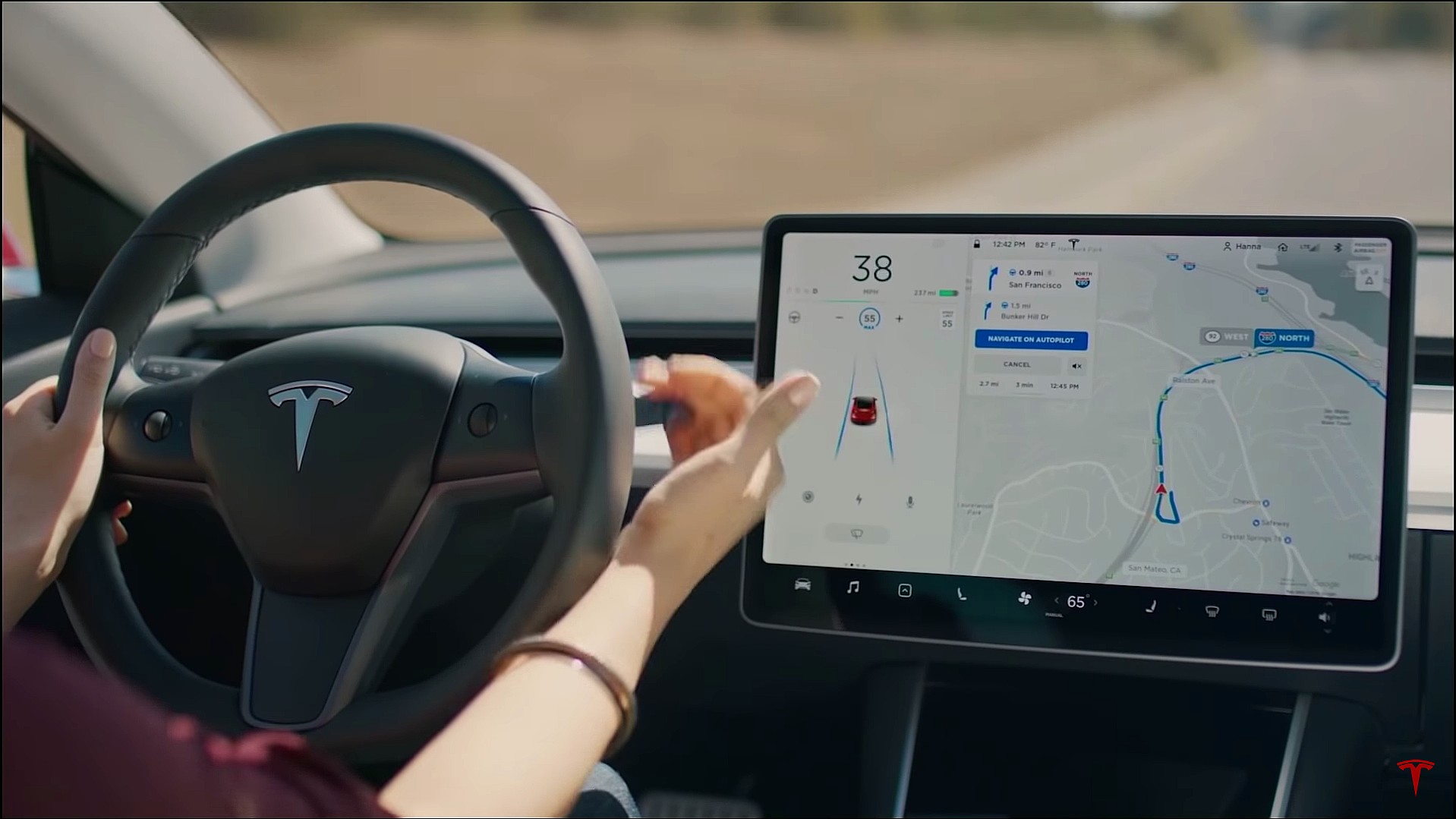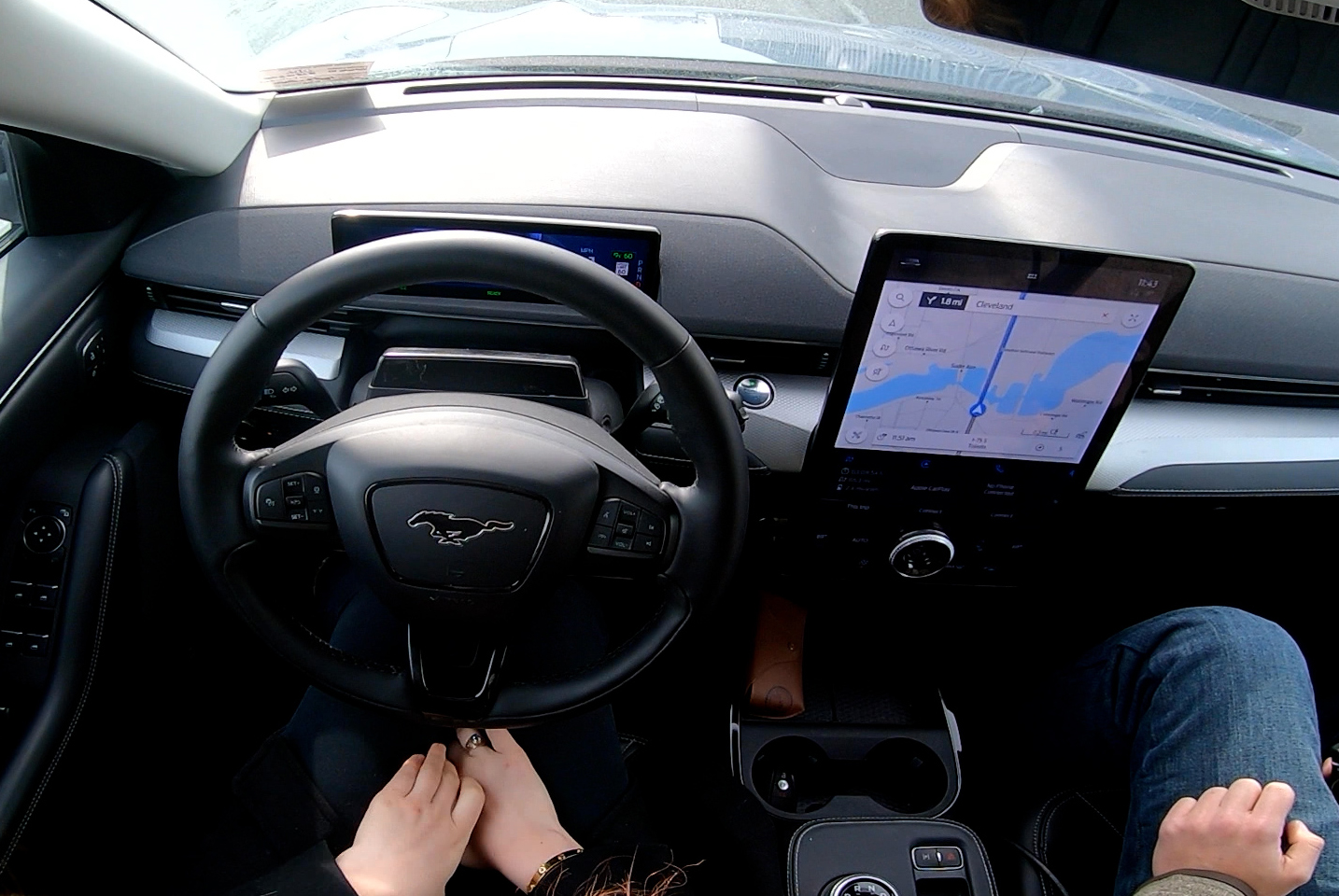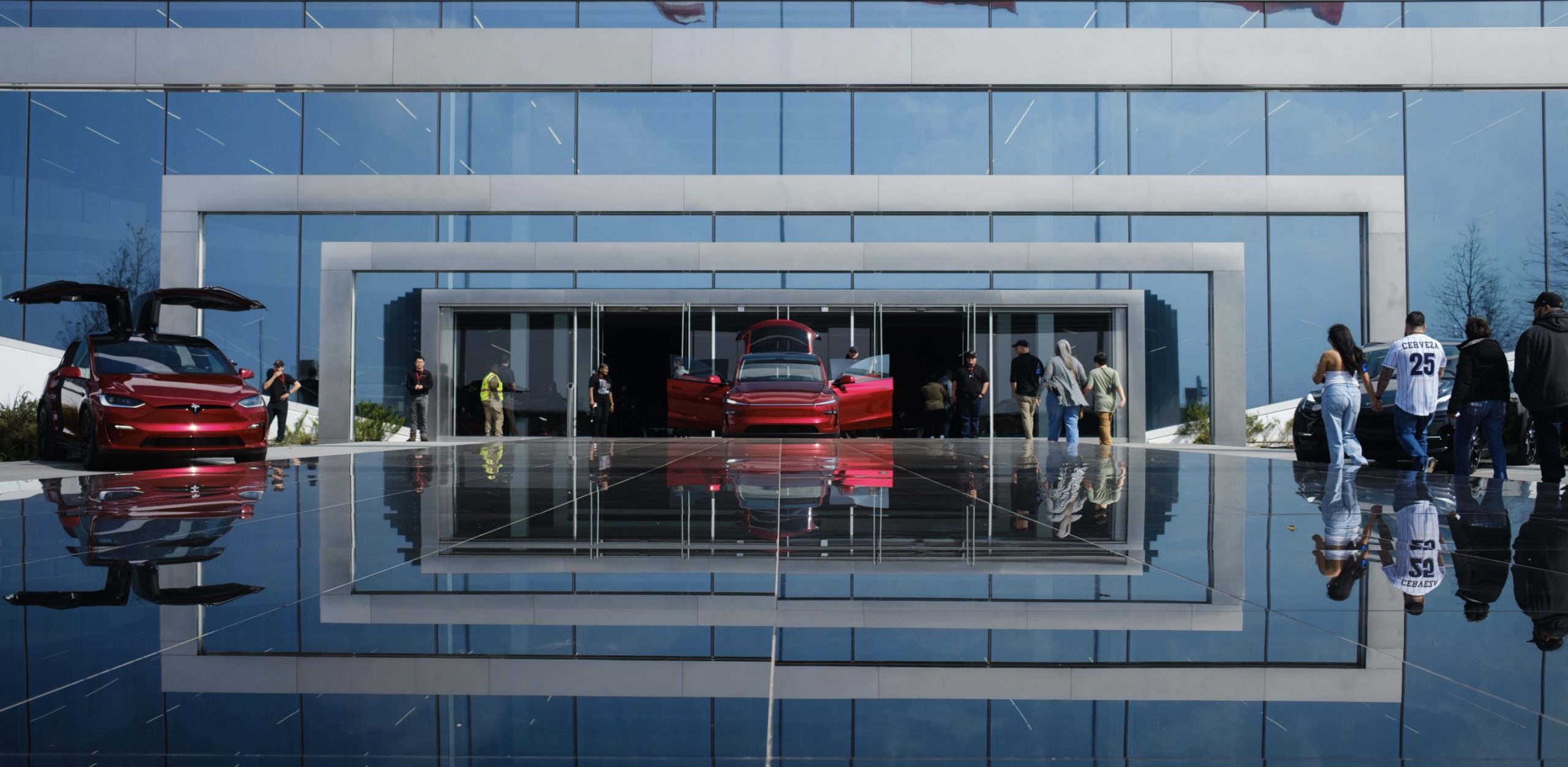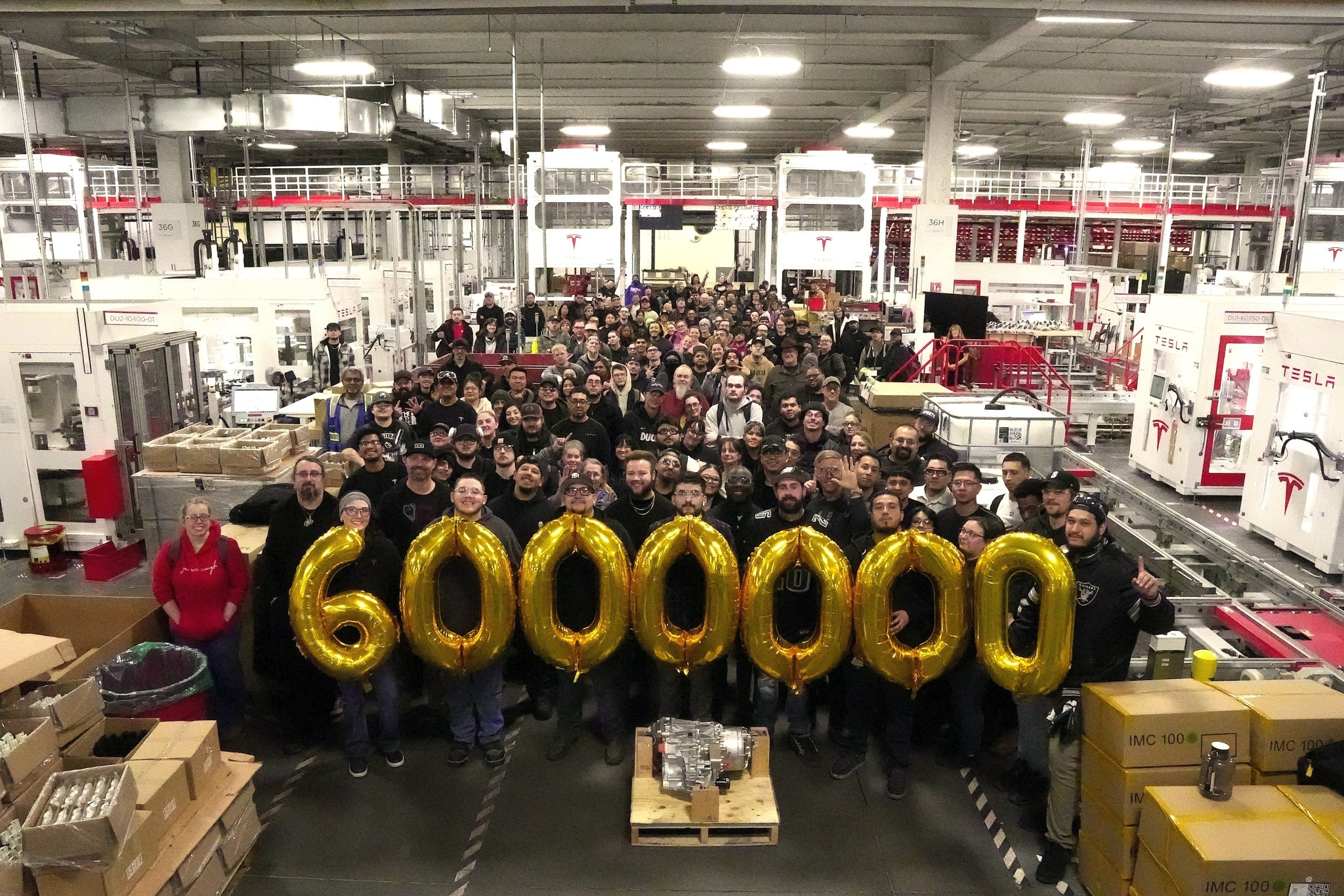

News
Ford BlueCruise, GM SuperCruise ranked as best Driver Assistance systems, Tesla Autopilot ranks 7th
Ford’s BlueCruise and General Motors’ SuperCruise were ranked in the top two spots in Consumer Reports’ recent analysis of twelve Active Driving Assistance Systems, while Tesla Autopilot was ranked seventh.
Among the manufacturers involved in the study, Ford and GM performed better than Mercedes-Benz, BMW, Toyota/Lexus, Volkswagen/Audi, Tesla, Rivian, Nissan/Infinity, Honda/Acura, Volvo/Polestar, and Hyundai/Kia/Genesis. Ford and GM’s driver monitoring systems were also lauded during CR’s 2022 testing.
Systems were tested around a track at CR’s Auto Test Center and on a 50-mile loop on public roads from September to December 2022. Each system had forty separate tests, and was evaluated in five specific categories: capability and performance, keeping the driver engaged, ease of use, clear when safe to use, and unresponsive driver.
According to the report directly from CR, Ford and GM’s ADAS options use “direct driver monitoring systems,” or DDMS, that require driver eyes to remain on the road, even while actions like steering, acceleration, and braking are being automated by the vehicles. These systems are crucial in CR’s grading scale, and the firm said it awards extra points to options that hold drivers accountable with DDMS. Additionally, systems that do not have DDMS will have points deducted.
Ford BlueCruise (Credit: Ford)
Here are the gradings and ratings:
- Ford BlueCruise/Lincoln ActiveGlide – 84
- Chevrolet/GMC/Cadillac/General Motors Super Cruise – 75
- Mercedes-Benz Driver Assistance – 72
- BMW Driving Assistance Professional – 69
- Toyota Safety Sense 3.0/Lexus Safety System+ 3.0 – 65
- Volkswagen Travel Assist/Audi Adaptive Cruise Assist – 62
- Tesla Autopilot – 61
- Rivian Highway Assist – 59
- Nissan/Infiniti ProPILOT Assist – 58
- Honda Sensing/Acura AcuraWatch – 58
- Volvo/Polestar Pilot Assist – 53
- Hyundai/Kia/Genesis Highway Driving Assist – 47
The Elephant in the Room: Where Tesla Fell Short, according to CR
Tesla was given the following grades in the five categories that were assessed:
- Capabilities and Performance – 9/10
- Keeping Driver Engaged – 3/10
- Ease of Use – 5/10
- Clear When Safe to Use – 3/10
- Unresponsive Driver – 4/10
CR said that Tesla has fallen from its second-place spot in 2020 to mid-pack because the automaker “hasn’t changed Autopilot’s basic functionality much since it first came out, instead just adding more features to it.”
“After all this time, Autopilot still doesn’t allow collaborative steering and doesn’t have an effective driver monitoring system,” Jake Fisher of CR said. “While other automakers have evolved their ACC (adaptive cruise control) and LCA (lane-centering assistance) systems, Tesla has simply fallen behind.”
One portion of the testing where CR was most critical was when Tesla and Mercedes-Benz’s systems allowed the vehicle to drive down the highway completely hands-free for roughly thirty seconds before audible alerts were given. Kelly Funkhouser, CR’s Manager of Vehicle Technology, estimated that it was roughly a half mile on a highway before the vehicles alerted the driver to pay attention to the road.
Tesla does have cabin cameras that monitor driver inattentiveness. The Model Y Owners Manual says the following:
“The cabin camera can determine driver inattentiveness and provide you with audible alerts, to remind you to keep your eyes on the road when Autopilot is engaged. By default, images and video from the camera do not leave the vehicle itself and are not transmitted to anyone, including Tesla, unless you enable data sharing. If you enable data sharing and a safety critical event occurs (such as a collision), Model Y shares short cabin camera video clips with Tesla to help us develop future safety enhancements and continuously improve the intelligence of features that rely on the cabin camera.”
In May 2021, Tesla activated camera-based driver monitoring. “The cabin camera above your rearview mirror can now detect and alert driver inattentiveness while Autopilot is engaged,” Tesla said in the notes. Tests of Tesla’s driver monitoring tests showed the system was effective in some instances, especially when looking at cell phones, with alerts coming in 15 seconds.
Tesla was complemented with its lane centering, as it gave smooth steering inputs and kept the car near the center of the lane on straight and curved roads.
However, more compliments came from CR with Tesla’s Adaptive Cruise Control. “The ACC function of Tesla’s Autopilot system is capable of stopping the car, such as at a red light behind another vehicle, for an unlimited amount of time before resuming again. But without an adequate driver monitoring camera,” Funkhouser said,” this is potentially unsafe as there’s no way to know whether the driver is paying attention when the vehicle starts moving again.”
Tesla’s system apparently differs from GM and Ford’s in the sense that BlueCruise and Super Cruise as “both point infrared cameras at driver faces and sound an alert if the driver stops paying attention to the road, even if just for a few seconds.”
You can read Consumer Reports’ full report here.
I’d love to hear from you! If you have any comments, concerns, or questions, please email me at joey@teslarati.com. You can also reach me on Twitter @KlenderJoey, or if you have news tips, you can email us at tips@teslarati.com.

Investor's Corner
Tesla releases Q4 and FY 2025 vehicle delivery and production report
Deliveries stood at 406,585 Model 3/Y and 11,642 other models, for a total of 418,227 vehicles.

Tesla (NASDAQ:TSLA) has reported its Q4 2025 production and deliveries, with 418,227 vehicles delivered and 434,358 produced worldwide. Energy storage deployments hit a quarterly record at 14.2 GWh.
Tesla’s Q4 and FY 2025 results were posted on Friday, January 2, 2026.
Q4 2025 production and deliveries
In Q4 2025, Tesla produced 422,652 Model 3/Y units and 11,706 other models, which are comprised of the Model S, Model X, and the Cybertruck, for a total of 434,358 vehicles. Deliveries stood at 406,585 Model 3/Y and 11,642 other models, for a total of 418,227 vehicles.
Energy deployments reached 14.2 GWh, a new record. Similar to other reports, Tesla posted a company thanked customers, employees, suppliers, shareholders, and supporters for its fourth quarter results.
In comparison, analysts included in Tesla’s company-compiled consensus estimate that Tesla would deliver 422,850 vehicles and deploy 13.4 GWh of battery storage systems in Q4 2025.
Tesla’s Full Year 2025 results
For the full year, Tesla produced a total of 1,654,667 vehicles, comprised of 1,600,767 Model Y/3 and 53,900 other models. Tesla also delivered 1,636,129 vehicles in FY 2025, comprised of 1,585,279 Model Y/3 and 50,850 other models. Energy deployments totaled 46.7 GWh over the year.
In comparison, analysts included in Tesla’s company-compiled consensus expected the company to deliver a total of 1,640,752 vehicles for full year 2025. Analysts also expected Tesla’s energy division to deploy a total of 45.9 GWh during the year.
Tesla will post its financial results for the fourth quarter of 2025 after market close on Wednesday, January 28, 2026. The company’s Q4 and FY 2025 earnings call is expected to be held on the same day at 4:30 p.m. Central Time.
Elon Musk
Starlink achieves major milestones in 2025 progress report
Starlink wrapped up 2025 with impressive growth, adding more than 4.6 million new active customers and expanding service to 35 additional countries, territories, and markets.

Starlink wrapped up 2025 with impressive growth, adding more than 4.6 million new active customers and expanding service to 35 additional countries, territories, and markets. The company also completed deployment of its first-generation Direct to Cell constellation, launching over 650 satellites in just 18 months to enable cellular connectivity.
SpaceX highlighted Starlink’s impressive 2025 progress in an extensive report.
Key achievements from Starlink’s 2025 Progress
Starlink connected over 4.6 million new customers with high-speed internet while bringing service to 35 more regions worldwide in 2025. Starlink is now connecting 9.2 million people worldwide. The service achieved this just weeks after hitting its 8 million customer milestone.
Starlink is now available in 155 markets, including areas that are unreachable by traditional ISPs. As per SpaceX, Starlink has also provided over 21 million airline passengers and 20 million cruise passengers with reliable high-speed internet connectivity during their travels.
Starlink Direct to Cell
Starlink’s Direct to Cell constellation, more than 650 satellites strong, has already connected over 12 million people at least once, marking a breakthrough in global mobile coverage.
Starlink Direct to Cell is currently rolled out to 22 countries and 6 continents, with over 6 million monthly customers. Starlink Direct to Cell also has 27 MNO partners to date.
“This year, SpaceX completed deployment of the first generation of the Starlink Direct to Cell constellation, with more than 650 satellites launched to low-Earth orbit in just 18 months. Starlink Direct to Cell has connected more than 12 million people, and counting, at least once, providing life-saving connectivity when people need it most,” SpaceX wrote.
News
Tesla Giga Nevada celebrates production of 6 millionth drive unit
To celebrate the milestone, the Giga Nevada team gathered for a celebratory group photo.

Tesla’s Giga Nevada has reached an impressive milestone, producing its 6 millionth drive unit as 2925 came to a close.
To celebrate the milestone, the Giga Nevada team gathered for a celebratory group photo.
6 million drive units
The achievement was shared by the official Tesla Manufacturing account on social media platform X. “Congratulations to the Giga Nevada team for producing their 6 millionth Drive Unit!” Tesla wrote.
The photo showed numerous factory workers assembled on the production floor, proudly holding golden balloons that spelled out “6000000″ in front of drive unit assembly stations. Elon Musk gave credit to the Giga Nevada team, writing, “Congrats on 6M drive units!” in a post on X.
Giga Nevada’s essential role
Giga Nevada produces drive units, battery packs, and energy products. The facility has been a cornerstone of Tesla’s scaling since opening, and it was the crucial facility that ultimately enabled Tesla to ramp the Model 3 and Model Y. Even today, it serves as Tesla’s core hub for battery and drivetrain components for vehicles that are produced in the United States.
Giga Nevada is expected to support Tesla’s ambitious 2026 targets, including the launch of vehicles like the Tesla Semi and the Cybercab. Tesla will have a very busy 2026, and based on Giga Nevada’s activities so far, it appears that the facility will be equally busy as well.








